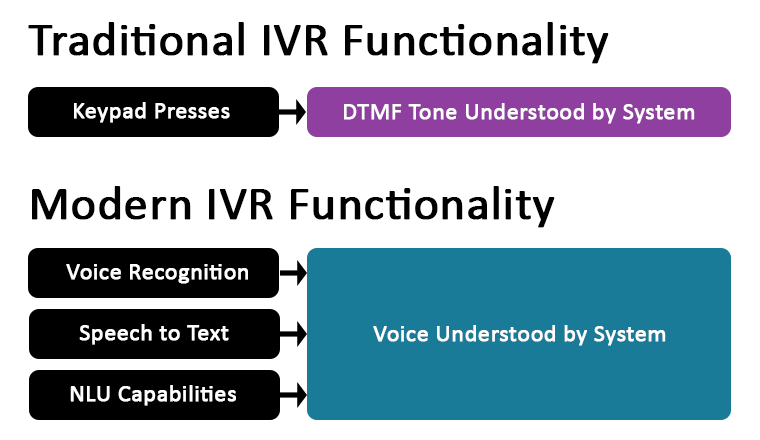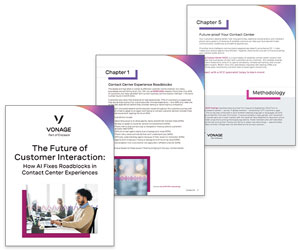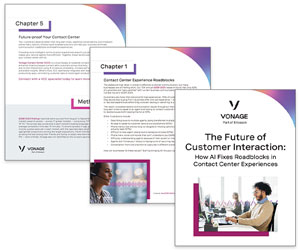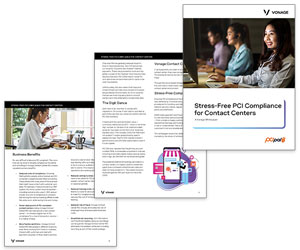IVR systems are widely used in contact centres to direct calls and automate interactions, and help businesses manage high call volumes efficiently while providing customers with self-service options.
Traditional IVR technology relied on keypad inputs, but modern systems now include voice recognition and AI-powered interactions.
To find out more, we asked Tom Baker, Senior Product Manager at Vonage, to provide a simple explanation on how an IVR works.
Video: How Does an IVR Work?
Watch the video below to hear Tom explain how an IVR works:
With thanks to Tom Baker, Senior Product Manager at Vonage, for contributing to this video.
Traditional IVR: Keypad-Based Navigation
In a basic IVR setup, callers hear a menu and select an option using their phone keypad, where the system recognises the input and routes the call accordingly, as Tom explains:
“If you’re thinking about traditional IVR technology of gathering a call as input, typically you would present some kind of audible menu to the caller. Do you want sales? Do you want service?
And you give them some mechanism to indicate their response. So not the old-fashioned, but the older technology that drove that was keypad presses.
So, I press a button on my telephone keypad, there’s a DTMF tone that’s understood by the system to correspond to the option that I want.“
This method, known as Dual-Tone Multi-Frequency (DTMF) input, has been a standard IVR function for many years.
Modern IVR: Voice Recognition and AI
More advanced IVR solutions now use voice recognition and natural language understanding (NLU). Instead of pressing buttons, callers can simply say what they need, making interactions more natural and efficient.
“More modern solutions will include things like voice recognition and speech to text, and NLU capabilities, which will allow you to interact with voice to say, I would like service.
And depending on how it’s built, it will then give you a result through the IVR system that corresponds to the option that you’ve selected. That’s the core IVR use-case.”
AI-driven IVR systems can also analyse responses and provide relevant options without needing rigid menu structures.

Customisable Call Flows and Automation
Many IVR platforms use a modular system, where different functions are built into a call flow.
“In general, for an IVR solution you would expect some kind of flowchart-based modular builder, where you have a bunch of different modules, and each one will give the caller some kind of experience.
So I play a message at this point. I control call recording. I ask the caller a question. I then route based on the options. I could apply skills, I could apply cues, all of that kind of thing to control the experience that the caller has.
Now, not all of those modules are necessarily audible. Some of them may be working in the background.”
These modules can:
- Play recorded messages
- Route calls based on selections
- Control call recording
- Integrate with customer databases
- Identify callers based on their phone numbers
Background IVR Functions
Not all IVR functions are audible to the caller. Some contact centres use silent IVR features to enhance customer service, such as retrieving customer details before connecting them to an agent.
“And for some customers, and for some types of contact centres, they don’t actually want the caller to ever have what they consider to be a traditional IVR because they don’t like that. But they may still want some of the silent functions of an IVR.
Connecting into back-end systems, identifying who the caller is based on the telephone number that they’re displaying, that kind of thing, in order to give their team as much information about the caller when they come through as possible.”
This allows for more personalised interactions without requiring the caller to navigate a menu.
The Role of IVR in Customer Experience
While some contact centres prefer a fully automated IVR experience, others use its background capabilities to improve efficiency.
Regardless of the approach, IVR remains a key tool for managing customer interactions and streamlining communication.
If you are looking for more great insights from the experts, check out these next:
- WFM Tools That Are Available
- Top Uses of Speech Analytics
- The Algorithms Behind Chatbots
- Understanding the Difference Between WFM and WFO
Author: Robyn Coppell
Reviewed by: Hannah Swankie
Published On: 1st Aug 2022 - Last modified: 25th Sep 2025
Read more about - Video, Call Handling, IVR Solutions, Tom Baker, Videos, Vonage









































